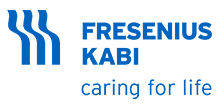预约演示
更新于:2025-05-07

Epic Pharma LLC
更新于:2025-05-07
概览
标签
神经系统疾病
呼吸系统疾病
心血管疾病
小分子化药
疾病领域得分
一眼洞穿机构专注的疾病领域
暂无数据
技术平台
公司药物应用最多的技术
暂无数据
靶点
公司最常开发的靶点
暂无数据
| 疾病领域 | 数量 |
|---|---|
| 神经系统疾病 | 2 |
| 排名前五的药物类型 | 数量 |
|---|---|
| 小分子化药 | 2 |
| 排名前五的靶点 | 数量 |
|---|---|
| D2 receptor(多巴胺D2受体) | 1 |
| NKCC2(钠钾氯协同转运蛋白-2) | 1 |
关联
6
项与 Epic Pharma LLC 相关的药物作用机制 D2 receptor拮抗剂 |
在研机构 |
在研适应症 |
最高研发阶段批准上市 |
首次获批国家/地区 美国 |
首次获批日期1974-01-18 |
作用机制 30S subunit抑制剂 [+1] |
在研机构 |
原研机构 |
在研适应症 |
非在研适应症- |
最高研发阶段批准上市 |
首次获批国家/地区 美国 |
首次获批日期1971-06-02 |
靶点 |
作用机制 NKCC2抑制剂 |
原研机构 |
非在研适应症 |
最高研发阶段批准上市 |
首次获批国家/地区 日本 |
首次获批日期1965-05-01 |
100 项与 Epic Pharma LLC 相关的临床结果
登录后查看更多信息
0 项与 Epic Pharma LLC 相关的专利(医药)
登录后查看更多信息
20
项与 Epic Pharma LLC 相关的新闻(医药)2025-01-25
·赛柏蓝
作者 | 颜色
来源 | 赛柏蓝
人福医药刚迎来央企入主,又更换董事长。
01
人福医药董事长换人
1月25日,人福医药发布《关于董事长辞职及选举新任董事长暨变更法定代表人的公告》,因工作调整,李杰辞去董事长和法定代表人职务。
同时,人福医药选举董事周汉生为董事长。周汉生既是人福医药董事及下属部分控股子公司董事,也是武汉当代科技产业集团董事。
武汉当代科技产业集团曾是人福医药的控股股东,9天之前,人福医药发布公告称,控股股东签署重整投资协议。招商局创新科技(集团)成为重整投资人,参与当代科技本次重整,投资总额为118亿元。
招商创科通过全资设立的招商局生命科技(武汉)参与当代科技的重整,并将控制当代科技持有的人福医药23.7%的股票表决权,成为人福医药新的控股股东。
“麻醉一哥”刚迎来央企控股随即更换董事长。
同日,人福医药董事会秘书李前伦因工作调整辞去董事会秘书职务,继续担任副总裁及公司下属子公司其他职务。在董事会秘书空缺期间,暂由董事、总裁邓霞飞代行董事会秘书的职责。
李杰在人福医药已经工作4年多,2020年4月3日,人福医药选举李杰担任第九届董事会董事长。李杰历任宜昌市化工医药局技术科科长、湖北宜药集团总经理、董事长、党委书记等。
2021年-2024年前三季度,人福医药实现营收205.49亿元、223.38亿元、245.25亿元、191.43亿元,同比增长-0.63%、8.71%、9.79%、5.70%;实现净利润13.17亿元、24.84亿元、21.34亿元、15.90亿元,同比增长30.96%、88.60%、-14.07%、-10.12%。
2023年-2024年前三季度,人福医药增收不增利。从人福医药2023年年报和2024年半年报来看,其营收成本、销售费用、管理费用、财务费用、研发费用相较同期均有所上涨。对于管理费用的变化,人福医药称与员工薪酬、差旅费用增长和固定资产折旧增加相关。
人福医药2023年年报
人福医药2024年半年报
作为“麻醉一哥”的人福医药,需要寻求更多刺激利润增长的落脚点。
02
业务调整,下一步发展?
招商创科对人福医药的重整被业内视为人福医药接下来发展的“定心丸”,在医药细分领域处于领先地位的人福医药,招商创科入主后,有望增强综合竞争力。
人福医药拥有市场上不少重磅产品,尤其在国内神经系统用药、甾体激素类药物、维吾尔民族药等细分领域。米内网数据显示,2023年中国公立医疗机构终端麻醉剂化药的销售规模超过200亿元,2024年上半年人福医药以35亿元的销售额排在Top 1集团,市场份额升至34.84%。
凭借芬太尼系列产品,如枸橼酸舒芬太尼注射液、注射用盐酸瑞芬太尼、盐酸阿芬太尼注射液等,人福医药与恒瑞医药、恩华药业并称麻醉药领域的三大龙头。
人福医药子公司宜昌人福的芬太尼系列、氢吗啡酮等产品为国家管制类药品,具有极强的专业性和较高的行业壁垒。
不过,2023年,枸橼酸舒芬太尼注射液、盐酸阿芬太尼注射液的销售量比上年均有所减少,分别减少1.37%、21.59%。
2023年人福医药营业收入或毛利的10%以上的产品,或营业收入、毛利排名前5的产品,以及重点细分领域的主要产品
近年来行业监管趋严,药品入院难度加大,叠加医保基金控费等因素影响,产品销售不及预期的风险有所增加。
2024年半年报中,人福医药提出,积极推进“归核聚焦”工作,持续优化资产业务。在取得阶段性进展的基础上,继续清理竞争优势不明显或协同性较弱的资产。
人福医药正在推进武汉康乐药业、湖北人福成田药业、人福大成(武汉)投资管理有限公司等公司股权的出售工作。同时,围绕既定细分领域进行产品业务的布局拓展,不断提高市场竞争力。
人福医药于2017年提出“归核聚焦”战略,并于2018年开始清理竞争优势不明显,协同性较弱的资产,包括非核心医药工商业资产、医疗服务资产、部分金融资产等,优化业务及资产结构。
目前,人福医药主要参股公司有8家,包括宜昌人福、葛店人福、武汉人福、Epic Pharma、新疆维药、三峡制药、北京医疗、湖北人福。
人福医药2024年半年报
2024年上半年,宜昌人福实现营收45.02亿元,同比增长11.78%,实现净利润14.25亿元,同比增长17.59%。作为人福医药的“现金奶牛”,宜昌人福的竞争力还在增加。
从央企入主到董事长换人,人福医药虽然变动频频,但留给其发展的空间还很广阔。
END
内容沟通:郑瑶(13810174402)
左下角「关注账号」,右下角「在看」,防止失联
高管变更财报
2024-08-18
上周,一个比较明显的信号就是“监管收紧”。
国家医保局官方微信号连续发了几篇与监管相关的内容,先是说明自今年5月与一心堂集团约谈后,后者贯彻落实国家医保局有关要求,在云南省医保局的积极指导下,认真开展医保基金使用问题自查自纠和全面整改,采取了一系列措施,取得了阶段性成效。
接着8月17日再度发文,公布了五家医院的违法违规问题,公安机关第一时间入驻5家医院,目前已全部开展立案侦查,依法对5家医院若干名涉案人员采取刑事强制措施,部分人员现已被提请批准逮捕。卫生健康部门对涉事的5家医院及相关医务人员分别处以吊销医疗机构执业许可证、吊销医师执业证书等行政处罚。下一步,医保部门将持续加强与公安、卫生健康等部门的贯通协同,强化线索排查和案情通报,多部门、多维度严查严打欺诈骗保行为。
连续两条内容都在发出警示:无论企业还是医疗机构,套取医保基金都是绝对不能跨越的红线。
证监部门也在“助力”,8月16日当天连续发出几则处罚决定书,分别对华道生物欺诈发行,冯越峰操纵“康惠制药”等3股非法获利等事件进行了通告处罚。
大洋彼岸,反复拉锯两年的美国“国谈”,也终于暂时宣告一段落了。所谓美国国谈,是联邦医保创立近60年来首次由美国政府直接出面和药企进行药价谈判。有药品入围的企业必须在2023年10月1日前决定是否参与谈判。如果拒绝,要么退出美国联邦医保,要么支付惩罚性税收,从前一年销售额的65%起征,最高可以递增到95%。
今年成果初现,看起来还很显著:当地时间8月15日,美国医疗保险和医疗补助服务中心(CMS)公布了首轮医保谈判结果,显示许多药物的价格都降了一半以上,降幅最大的是默沙东的糖尿病药物Januvia,达79%。论力度,甚至可以和中国的国谈相提并论了。
看来,全球无论哪个国家,高昂的药价都是令人头疼的问题,即便是在对自由市场定价推崇备至的美国,也不得不“动刀”了。
本周还有哪些大事发生?
政策动态
五医院涉嫌骗保,部分人员已被提请批准逮捕:8月17日,据国家医保局微信公众号消息,2024年6月-7月,国家医保局会同山西省医保局,运用大数据模型,对山西省部分城市医保基金使用数据作了筛查,根据可疑线索指向,对忻州市保德县德馨医院、代县和平医院,朔州市应县东城医院、济民医院、夕阳红华康医院进行了专项检查,初步发现涉嫌欺诈骗保问题。公安机关第一时间入驻5家医院,目前已全部开展立案侦查,依法对5家医院若干名涉案人员采取刑事强制措施,部分人员现已被提请批准逮捕。卫生健康部门对涉事的5家医院及相关医务人员分别处以吊销医疗机构执业许可证、吊销医师执业证书等行政处罚。下一步,医保部门将持续加强与公安、卫生健康等部门的贯通协同,强化线索排查和案情通报,多部门、多维度严查严打欺诈骗保行为。
一心堂医保基金整改取得阶段性成效:据国家医保局官方微信号8月16日消息,自2024年5月24日约谈后,一心堂药业集团贯彻落实国家医保局有关要求,在云南省医保局的积极指导下,认真开展医保基金使用问题自查自纠和全面整改,采取了一系列措施,取得阶段性成效。下一步,国家医保局及各省医保部门将继续加强对一心堂医保基金使用工作的管理和指导,推动一心堂持续完善制度,强化内部管理,规范合理使用医保基金。
美版医保谈判结果出炉:美国联邦医疗保险(Medicare)官员于 8 月 15 日公布了医保谈判前 10 种药品的价格谈判结果。降价幅度很大,除一个药外,所有药物的价格都至少降低了 50%。但新价格要到 2026 年才会生效。这10个药包括百时美施贵宝公司的血液稀释剂 Eliquis、勃林格殷格翰的糖尿病药 Jardiance、强生的血液稀释剂 Xarelto、默沙东的糖尿病药 Januvia、阿斯利康的糖尿病药 Farxiga、诺华的心力衰竭治疗药 Entresto、安进的类风湿性关节炎药 Enbrel、强生和艾伯维的血癌治疗药 Imbruvica、强生的抗炎药物 Stelara,以及 诺和诺德的胰岛素,包括 Fiasp 和 NovoLog。
山东制订印发可持续发展规划,到2030年全面消除麻风危害:山东省疾病预防控制局等14部门近日联合制订了《山东省全面消除麻风危害可持续发展规划(2024—2030年)》,提出到2025年,进一步巩固基本消除麻风危害成果,全省所有县(市、区)麻风患病率控制在20万分之一以下;麻风患者完成治疗时新发生2级畸残比控制在2%以下。到2030年达到全面消除麻风危害目标,全省所有县(市、区)麻风患病率持续控制在20万分之一以下;麻风患者完成治疗时新发生2级畸残比为0。
大型制药
康恩贝聘任胡季强为名誉董事长:8月16日,康恩贝公告,公司于当日召开了第十一届董事会第一次会议,审议通过聘任胡季强为公司名誉董事长的议案。因第十届董事会任期届满,自公司第十一届董事会产生之日起,胡季强不再担任公司董事及董事长职务。鉴于胡季强具有丰富的医药行业经验与企业管理经验,经公司董事会提名并通过,同意聘任胡季强为公司第十一届董事会名誉董事长,任期为三年,自本次董事会审议通过之日起至第十一届董事会届满之日止。
人福医药熊去氧胆酸片获得美国FDA批准文号:8月16日晚间,人福医药发布公告,近日,公司全资子公司Epic Pharma,LLC收到美国食品药品监督管理局(FDA)关于熊去氧胆酸片的批准文号。公告显示,熊去氧胆酸片是一种用于胆固醇型结石、胆汁淤积性肝病(如:原发性胆汁性肝硬化)、胆汁反流性胃炎的药物。Epic Pharma于2021年1月提交熊去氧胆酸片的ANDA申请,累计研发投入约为140万美元。根据IQVIA数据统计,2023年度该药品在美国市场的总销售额约为5600万美元,主要经营厂商包括Zydus、Strides、Glenmark等。本次熊去氧胆酸片获得美国FDA批准文号标志着EpicPharma具备了在美国市场销售上述产品的资格,将对公司拓展美国仿制药市场带来积极的影响,EpicPharma后续将积极推进该产品在美国市场的上市准备工作。
京东健康上半年净利润26.4亿元:8月15日,京东健康发布2024年中期业绩公告。财报显示,2024年上半年,京东健康总收入为人民币283亿元,非国际财务报告准则指标下(Non-IFRS)净利润达26.4亿元,同比增长8.5%,净利润率达9.3%、创半年度业绩新高。截至2024年6月30日,京东健康过去12个月的年度活跃用户数量达1.81亿;第三方合作商家数量达到8万家,同比增长超100%;京东健康互联网医院日均在线问诊咨询量已超48万。
吉利德肝病新药获FDA加速批准上市:8月14日,吉利德(Gilead Sciences)宣布其口服PPAR-delta激动剂Livdelzi(seladelpar)获得美国食品药品管理局(FDA)加速批准,与熊去氧胆酸(UDCA)联用治疗对UDCA反应不佳的成人原发性胆汁性胆管炎(PBC),或作为单药治疗用于不能耐受UDCA的患者,但不建议患有或发展为失代偿期肝硬化的患者使用Livdelzi。
华东医药引入韩国IMB两款OX40L靶点创新药:8月15日晚间,华东医药发布公告称,其全资子公司中美华东与韩国IMBiologics corp.签订了产品独家许可协议,获得IMB两款自身免疫领域的全球创新产品IMB-101及IMB-102在包含中国在内的 37个亚洲国家(不含日本,韩国和朝鲜)的独家许可,包括开发、注册、生产及商业化权益。中美华东将向其支付600万美元首付款,200万美元技术转移里程碑付款,最高不超过3.075亿美元的开发、注册及销售里程碑付款,以及分级最高两位数的净销售额提成费。
“好大夫”已现身支付宝,对近期收购报道不予置评:前日,有媒体报道称蚂蚁集团正计划收购好大夫在线。8月15日,好大夫在线方面表示,对此消息不予置评,请以官方发布的消息为准;支付宝方面亦未作明确回应。当天,在支付宝首页输入“医疗健康”并进入相关频道后,可以在屏幕正中间的滚动海报中看到“好大夫精选全国大专家”字样。点击进入后,页面所呈现的内容和好大夫在线App里的“专家问诊”界面完全一致。
阿斯利康重磅免疫疗法与奥拉帕利组合获欧盟批准,用于治疗子宫内膜癌:8月15日,阿斯利康(AstraZeneca)宣布其重磅PD-L1抑制剂Imfinzi(durvalumab)和PARP抑制剂Lynparza(olaparib,奥拉帕利)已在欧盟(EU)获批用于治疗某些原发性晚期或复发性子宫内膜癌患者。Imfinzi联合化疗作为一线疗法,随后接续Lynparza和Imfinzi治疗,被批准用于治疗错配修复功能正常(pMMR)患者。对于错配修复缺陷(dMMR)的患者,Imfinzi联合化疗后接续Imfinzi单药治疗也已获批。根据新闻稿,这是首个获批用于治疗子宫内膜癌的免疫疗法与PARP抑制剂组合。根据新闻稿,这是首个获批用于治疗子宫内膜癌的免疫疗法与PARP抑制剂组合。资料显示,Imfinzi是一种单克隆抗体,可与PD-L1蛋白结合,阻断PD-L1与PD-1和CD80蛋白的相互作用,对抗肿瘤的免疫逃逸策略,释放对免疫应答的抑制。Lynparza则是一种“first-in-class"的PARP抑制剂,也是首个合成致死靶向治疗药物,用于靶向带有同源重组修复(HRR)缺陷细胞/肿瘤(如携带BRCA1和/或BRCA2突变的细胞)。
巴克斯特达成38亿美元协议,将肾脏护理业务出售给凯雷集团:巴克斯特(Baxter)宣布了凯雷集团(Carlyle Group)收购其肾脏保健业务的最终协议,该业务计划分拆为一家名为Vantive的独立公司。凯雷拥有丰富的医疗技术经验,过去十年在该行业投资超过400亿美元。Vantive的投资是与Atmas Health合作进行的,Kieran Gallahue将担任主席,与首席执行官Chris Toth和Vantive的管理团队合作。在或需进行交割调整的前提下,根据最终协议的条款,百特将获得约35亿美元的税前现金对价,目前预计税后约为30亿美元。预计本次交易将于2024年底或2025年初完成,但需获得常规的监管批准并满足其他成交条件。
恒瑞医药SHR7280片临床试验申请获批:恒瑞医药8月13日晚间发布公告,公司收到国家药品监督管理局核准签发关于SHR7280片的《药物临床试验批准通知书》,将于近期开展临床试验。申请的适应症为,SHR7280片反向添加替勃龙片用于伴有月经过多的子宫肌瘤。
生物技术
适介医疗科技(广州)有限公司宣布完成A+轮融资:近日,适介医疗科技(广州)有限公司宣布完成数千万的A+轮融资。这是继2023年2月成功完成山东和信A轮融资后,适介医疗再次获得知名天使投资机构物明投资的追加投资。本轮融资将有力支持适介医疗在经桡动脉入路神经介入器械领域的研发创新和市场拓展,加速公司核心产品管线的商业化进程。自2021年创立以来,适介医疗始终致力于开辟经桡动脉治疗脑卒中的崭新道路,其产品始终以经桡动脉神经介入为核心布局,为患者、医生、国家医保及医院提供了创新的经桡动脉神经介入解决方案,社会经济效益显著。并且适介医疗还构建了完备的神经介入医疗器械研发体系,涵盖从研发、生产到全链条质量检测的实验室及高端设备装置,确保每一环节均达到国际领先水平。
天智航骨科手术导航定位系统及工具包获得欧盟CE认证:近日,北京天智航医疗科技股份有限公司公告,其骨科手术导航定位系统及骨科手术导航定位工具包近日获得欧盟 CE 认证,有效期至2029年8月1日。此举为公司海外市场的布局打下了坚实的基础,有助于提升公司综合竞争力水平,但具体销售情况受市场推广、市场需求、国际贸易环境等多种因素影响。
荣昌生物发布中期业绩,股东应占亏损7.8亿元 同比扩大10.96%:近日,荣昌生物发布截至2024年6月30日止六个月中期业绩,该集团期内取得收益7.4亿元(人民币,下同),同比增加76.5%;股东应占亏损7.8亿元,同比扩大10.96%;每股基本亏损1.45元。公告称,收益增加乃主要由公司自身免疫类商业化产品泰它西普及抗肿瘤类商业化产品维迪西妥单抗的销售放量导致销售收入同比增长强劲。集团已建立销售及营销部,致力于管线产品的商业化。根据产品的适应症,集团分别建设了自身免疫和肿瘤领域的两支独立销售团队。
Abata获BMS战略投资,加速推进自体Treg疗法进入临床:当地时间8月15日,Abata Therapeutics宣布获得Bristol Myers Squibb的股权投资,本次投资为Abata的Treg(调节性T细胞)细胞疗法提供了资金支持,助力其ABA-101项目加速进入临床开发阶段。Abata专注于利用Treg疗法来应对严重的自身免疫性和炎症性疾病。Treg细胞在调节免疫反应中扮演关键角色,能够抑制过度的免疫反应,从而减轻炎症和组织损伤。Abata通过精准调控Treg细胞,开发了具有组织特异性、强大且持久的两大领先项目,ABA-101和ABA-201,分别针对进行性多发性硬化症(MS)和1型糖尿病。这两种疾病均为组织特异性自身免疫性疾病,目前存在着巨大的未满足的医疗需求。
希润医疗宣布完成数千万元Pre-A轮融资:近日,软体康复机器人企业宁波希润医疗科技有限公司宣布完成数千万元Pre-A轮融资。本次融资由宁波复创创业投资基金和宁波天使基金共同投资。自2019年成立以来,希润医疗便深耕康复科技领域,依托上海交通大学康复机器人转化平台,致力于康复机器人技术的研发,打造软体康复机器人系列产品,帮助患者更好的康复,提高生活质量,让患者重获新生。公司产品拥有四十多项专利,并取得国内NMPA、欧盟CE、美国FDA医疗器械注册证。
资本市场
华道生物欺诈发行,公司及相关责任人合计被罚1150万:8月16日,中国证监会发布行政处罚决定书(华道生物及其责任人员),对苏州华道生物药业股份有限公司欺诈发行行为进行了立案调查,华道生物披露的《招股说明书》第八节“财务会计信息与管理层分析”涉及的财务数据存在虚假记载,2019年至2021年,华道生物以虚开发票的方式虚假销售8-羟基喹啉铜、二苯砜、苯亚磺酸钠等产品,同时伪造销售回款,导致《招股说明书》披露的销售收入和利润等存在虚假。鉴于华道生物在深圳证券交易所启动现场督导工作后撤回申请文件,未注册发行股票,在综合考虑当事人违法行为的事实、性质、情节与社会危害程度后,依据《证券法》第一百八十一条第一款的规定,证监会决定:一、对苏州华道生物药业股份有限公司处以300万元的罚款;二、对华道生物董事长、总经理刘明荣处以250万元的罚款;三、对华道生物董事周培良、时任华道生物财务总监金利忠分别处以200万元的罚款;四、对时任华道生物董事会秘书宗冬青、华道生物IPO协调人陈荍分别处以100万元的罚款。
冯越峰操纵“康惠制药”等3股获利145万,被证监会罚没超580万元:8月16日,中国证监会发布行政处罚决定书(冯越峰),2017年6月26日至2018年7月2日期间,冯越峰控制使用账户组操纵“康惠制药”“康盛股份”“柯利达”等3只股票交易价格和交易量,合计获利1,454,511.85元。证监会决定:没收冯越峰违法所得1,454,511.85元,并处以4,363,535.55元的罚款。
一审| 黄佳
二审| 李芳晨
三审| 李静芝
精彩推荐
CM10 | 集采 | 国谈 | 医保动态 | 药审 | 人才 | 薪资 | 榜单 | CAR-T | PD-1 | mRNA | 单抗 | 商业化 | 国际化 | 猎药人系列专题 | 出海
启思会 | 声音·责任 | 创百汇 | E药经理人理事会 | 微解药直播 | 大国新药 | 营销硬观点 | 投资人去哪儿 | 分析师看赛道 | 药事每周谈 | 医药界·E药经理人 | 中国医药手册
创新100强榜单 | 恒瑞 | 中国生物制药 | 百济 | 石药 | 信达 | 君实 | 复宏汉霖 |翰森 | 康方生物 | 上海医药 | 和黄医药 | 东阳光药 | 荣昌 | 亚盛医药 | 齐鲁制药 | 康宁杰瑞 | 贝达药业 | 微芯生物 | 复星医药 |再鼎医药|亚虹医药
跨国药企50强榜单 | 辉瑞 | 艾伯维 | 诺华 | 强生 | 罗氏 | BMS | 默克 | 赛诺菲 | AZ | GSK | 武田 | 吉利德科学 | 礼来 | 安进 | 诺和诺德 | 拜耳 | 莫德纳 | BI | 晖致 | 再生元
带量采购
2024-05-26
来源:企业公告 编辑:wangxinglai2004近日,4药企分别发布了产品海外上市进展公告,具体为人福医药两制剂获FDA注册文号、东亚药业API获韩国证书、健友药业制剂获FDA注册批件和亿帆医药制剂获新加坡注册批文。人福医药两制剂获FDA批准文号一、药物基本情况 1、乙酰唑胺片基本信息 药品名称:Acetazolamide Tablets USP(乙酰唑胺片) 申请事项:ANDA(美国新药简略申请,即美国仿制药申请。ANDA获得美国FDA
审评批准意味着申请者可以生产并在美国市场销售该产品。) ANDA批件号:218023剂型:片剂 规格:125mg和250mg药品类型:处方药
乙酰唑胺片为碳酸酐酶抑制药,是一种用于治疗青光眼、癫痫、急性高山症、周期
性瘫痪、特发性颅内高压(原因不明的脑压升高)、心脏衰竭和碱化尿液的药物。Epic
Pharma于2023年6月提交乙酰唑胺片的ANDA申请,累计研发投入约为120万美元。2023年度该药品在美国市场的总销售额约为1,300万美元,主要厂商包
括Strides、Lifestar等。 2、双氟泼尼酯眼用乳液的基本信息 药品名称:Difluprednate Ophthalmic Emulsion(双氟泼尼酯眼用乳液) 申请事项:ANDA(美国新药简略申请,即美国仿制药申请。ANDA获得美国FDA
审评批准意味着申请者可以生产并在美国市场销售该产品。) ANDA批件号:207284剂型:眼用乳剂 规格:0.05% 药品类型:处方药 双氟泼尼酯眼用乳液用于治疗眼部术后局部炎症和疼痛。Epic Pharma于2023年5月收购正在FDA审评中的双氟泼尼酯眼用乳液项目,后续通过补充研究及与FDA沟通后获批,累计收购及后续研发投入约为80万美元。2023年度该药品在
美国市场的总销售额约为2,900万美元,主要厂商包括Sandoz、Amneal、Dr.Reddy’s等。 本次乙酰唑胺片和双氟泼尼酯眼用乳液获得美国FDA批准文号标志着Epic Pharma
具备了在美国市场销售上述产品的资格,将对公司拓展美国仿制药市场带来积极的影响,
Epic Pharma后续将积极推进上述产品在美国市场的上市准备工作。东亚药业API获韩国注册证书一、药物基本情况 制造企业名称:浙江东亚药业股份有限公司 企业地址:中国浙江省三门县浦坝港镇沿海工业城 产品名称:依帕司他 DMF注册号:수289-19-ND发证机构:韩国食品药品监督管理局(韩国MFDS)二、药物其他相情况 依帕司他属于糖尿病用药,可抑制糖尿病病人体内山梨醇含量的异常升高,有效预防、改善和治疗糖尿病并发的末梢神经障碍,如麻木感、疼痛感等。 2017-2021年,我国依帕司他制剂市场销售额从7.51亿元增长到14.64亿元,
复合增长率为18.17%。健友药业制剂获FDA注册批件一、药物基本情况 (一)药品名称:依替巴肽注射液 (二)适 应 症:依替巴肽注射液适用于: 用于急性冠状动脉综合征(不稳定型心绞痛/非ST段抬高型心肌梗死)
患者,包括即将接受药物治疗的患者和接受经皮冠状动脉介入术(PCI)的患者。用于进行经皮冠状动脉介入术(PCI)的患者,包括进行冠状动脉内支
架置入术的患者,以降低死亡、新发心梗或需要紧急介入治疗的联合终点事件发
生率。 (三)剂 型:注射液 (四)规 格:20 mg/10 mL (2 mg/mL),75 mg/100 mL (0.75 mg/mL) (五)ANDA号:213599(六)申 请 人:香港健友实业有限公司 二、药物其他相情况 公司于2024年05月09日获得美国FDA的通知,香港健友向美国FDA申报的依替巴肽注射液,20 mg/10 mL (2 mg/mL),75 mg/100 mL (0.75 mg/mL)的
ANDA申请获得批准。 依替巴肽注射液原研药品,由MERCK SHARP AND DOHME LLC A SUB OF
MERCK AND CO INC 持有,1998年05月18日经FDA批准在美国上市。经查询,美国境内,目前有8家同规格依替巴肽注射液获批上市。中国境内,目前有包括沈阳双鼎、海南普利、江苏诺泰澳赛诺、海南双成等7家同规格依替巴肽注射液获批上市。截至目前,公司在依替巴肽注射液研发项目上已投入研发费用约人民币2468.66万元。亿帆医药制剂获新加坡注册批文一、药物基本情况 1、药品名称:GINKGO LEAF PILLS(银杏叶丸) 2、产品类别:中成药 3、剂型:丸剂(浓缩丸) 4、规格:每瓶装0.2克(含总黄酮醇苷19.2毫克,萜类内酯4.8毫克) 5、生产厂家:四川德峰药业有限公司 6、注册编号:128806 二、药物其他相情况 该产品功能主治为:活血化瘀通络,增加心脑和肢体末梢的血流和供氧量。 用于瘀血阻络引起的胸痹、心痛、肢体麻木等症。有助于改善成人认知功能和大
脑记忆功能。 银杏叶制剂是心脑血管治疗领域的一个经典品种,获得国内公认的权威指南推荐-中国痴呆与认知障碍指南写作组和中国医师协会神经内科医师分会认知障碍疾病专业委员会发布的《2018中国痴呆与认知障碍诊治指南(二):阿尔茨海
默病诊治指南》推荐品种。银杏叶丸作为银杏叶制剂的一种,因其为纯中药成份,无药物依赖性及成瘾性,安全性好。公司于2024年3月7日向HSA递交了中成药产品注册申请(申请号:2429845Z),并于2024年5月获得HSA的注册批准。
并购上市批准申请上市医药出海优先审批
100 项与 Epic Pharma LLC 相关的药物交易
登录后查看更多信息
100 项与 Epic Pharma LLC 相关的转化医学
登录后查看更多信息
组织架构
使用我们的机构树数据加速您的研究。
登录
或

管线布局
2025年12月23日管线快照
管线布局中药物为当前组织机构及其子机构作为药物机构进行统计,早期临床1期并入临床1期,临床1/2期并入临床2期,临床2/3期并入临床3期
批准上市
2
4
其他
登录后查看更多信息
当前项目
| 药物(靶点) | 适应症 | 全球最高研发状态 |
|---|---|---|
呋塞米 ( NKCC2 ) | 水肿 更多 | 批准上市 |
盐酸吗茚酮 ( D2 receptor ) | 精神分裂症 更多 | 批准上市 |
硫酸卷曲霉素 ( 30S subunit x 50S subunit ) | 肺结核 更多 | 撤市 |
异烟肼 | 结核 更多 | 撤市 |
氯化钙/葡萄糖/谷胱甘肽二硫/氯化镁/氯化钾/碳酸氢钠/氯化钠/磷酸钠 | 眼科外科手术 更多 | 撤市 |
登录后查看更多信息
药物交易
使用我们的药物交易数据加速您的研究。
登录
或

转化医学
使用我们的转化医学数据加速您的研究。
登录
或

营收
使用 Synapse 探索超过 36 万个组织的财务状况。
登录
或

科研基金(NIH)
访问超过 200 万项资助和基金信息,以提升您的研究之旅。
登录
或

投资
深入了解从初创企业到成熟企业的最新公司投资动态。
登录
或

融资
发掘融资趋势以验证和推进您的投资机会。
登录
或

生物医药百科问答
全新生物医药AI Agent 覆盖科研全链路,让突破性发现快人一步
立即开始免费试用!
智慧芽新药情报库是智慧芽专为生命科学人士构建的基于AI的创新药情报平台,助您全方位提升您的研发与决策效率。
立即开始数据试用!
智慧芽新药库数据也通过智慧芽数据服务平台,以API或者数据包形式对外开放,助您更加充分利用智慧芽新药情报信息。
生物序列数据库
生物药研发创新
免费使用
化学结构数据库
小分子化药研发创新
免费使用


